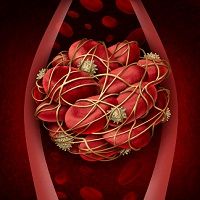New Oral Anticoagulants vs. Warfarin: Same Stroke Prevention, Less Internal Bleeding
At the European Society of Cardiology (ESC 2016) Congress late last month, Laila Staerk, MD, of Herlev and Gentofte University Hospital in Denmark, presented the findings of a large study on bleeding among patients with atrial fibrillation who were prescribed various stoke prevention medicines.

At the European Society of Cardiology (ESC 2016) Congress late last month, Laila Staerk, MD, of Herlev and Gentofte University Hospital in Denmark, presented the findings of a large study on bleeding amongst patients with atrial fibrillation (AF) who were prescribed various stoke prevention medicines. AF, a common type of irregular heartbeat that causes a massively heightened risk of stroke (among other ailments), already impacts over 10 million Europeans, a number that is expected to triple over the next 40 years.
Currently, warfarin is one of the most popular drugs available for stroke prevention. It works as a vitamin K antagonist, a blood thinner that minimizes the action of vitamin K, and thus carries a host of dietary interactions. The new crop of anticoagulants, including dabigatran, apixaban, and rivaroxaban, are non-vitamin K antagonist oral anticoagulants (NOACs).
An inherent side effect of many blood thinners is increased risk of internal bleeding. Intracranial bleeding is particularly worrisome, and the study sought to compare its rates among patients on warfarin and those on NOACs. Over 43,000 participants with AF were divided between the four treatments: 42% were issued warfarin, 29% were on dabigatran, 16% apixaban, and 13% rivaroxaban.
Over the course of a year, the researchers found a similar stroke risk among the four groups, between 2% and 2.5% (1,054 participants suffered them in total). Dabigatran and apixaban were shown to have significantly lower occurrences of internal bleeding (0.3% to 0.4%) than warfarin (0.6%). The study recorded 261 intracranial bleedings in total.
Stark made sure to note that, “The inclusion and exclusion criteria in our study were broadly similar for patients initiating NOACs or warfarin, and this gave a straightforward opportunity to directly compare the treatment regimens, which is in contrast to the randomized trials." Patients deemed “fragile” were not excluded from this registry study, while those with “increased risk of bleeding, liver disease, and chronic kidney disease are less represented” in previous trials.
Related Coverage:
Apixaban Compares Favorably with Warfarin in Safety, Efficacy
Sigrun Halvorsen, MD: Comparing Bleeding Rates in Non-valvular AF Patients Prescribed Anticoagulants